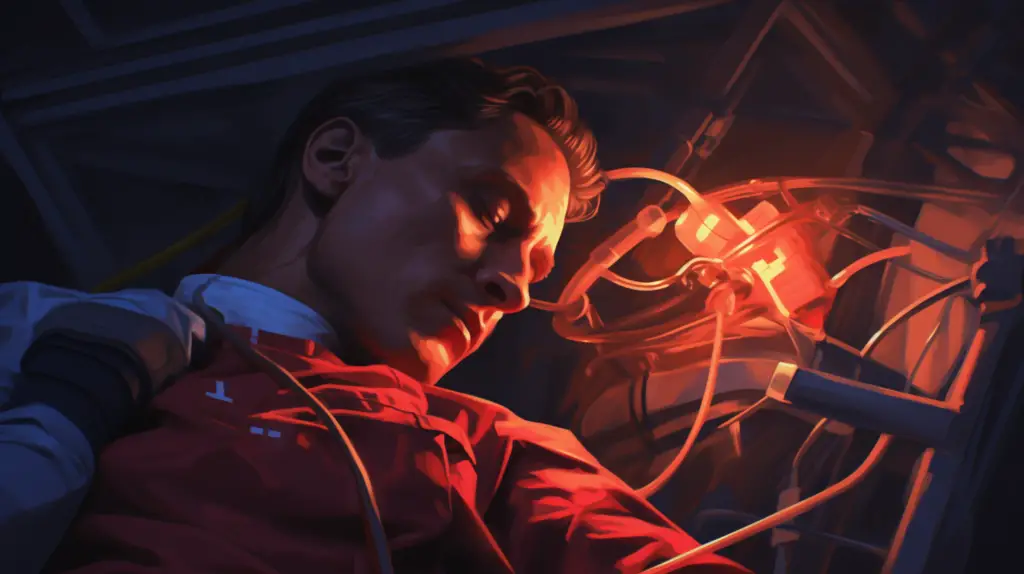Cardiac arrest, an abrupt cessation of normal circulation of the blood due to failure of the heart to contract effectively, is a serious medical emergency that requires immediate attention. Yet despite its prevalence and severe consequences, many misconceptions and lack of knowledge still exist about this critical condition. The recent high-profile case of the 18-year-old basketball player Bronny James, the son of NBA star LeBron James, who had a cardiac arrest, has raised the public’s interest in what causes cardiac arrest in young athletes.

The following information aims to demystify the complexities surrounding cardiac arrest, brigning 25 essential facts you need to know about it, including symptoms, risk factors, potential treatments, and more.
1. Definition: Cardiac arrest is a sudden, unexpected loss of heart function, breathing, and consciousness, often resulting from an electrical disturbance in your heart that disrupts its pumping action, halting blood flow to the rest of your body.
2. Prevalence: In the United States alone, around 350,000 cardiac arrests occur outside of the hospital each year, according to the American Heart Association.
3. Survival Rates: Less than 10% of people who experience a cardiac arrest outside the hospital survive. Survival rates increase substantially if the event happens in a hospital setting due to immediate medical intervention.
4. Sudden Cardiac Arrest vs. Heart Attack: Cardiac arrest is not the same as a heart attack, though the latter can lead to the former. A heart attack happens when blood flow to a part of the heart is blocked, often by a blood clot, causing heart muscle damage.
5. Causes: Most cardiac arrests are due to chaotic heart rhythms called ventricular fibrillation and ventricular tachycardia. Other causes can include respiratory arrest, drowning, choking, trauma, or drug overdose.
6. Risk Factors: Numerous factors increase the risk of cardiac arrest, including coronary artery disease, heart attack history, specific genetic disorders, drug abuse, heavy alcohol consumption, and significant physical stress.
7. Symptoms: Unlike a heart attack, which usually presents with early warning signs, a cardiac arrest often happens suddenly and without any warnings. Symptoms can include sudden collapse, no pulse, no breathing, loss of consciousness, and sudden unresponsiveness.
8. Impact of Quick Intervention: Immediate response can significantly improve the survival and prognosis of cardiac arrest victims. Every minute without CPR or defibrillation decreases a victim’s survival rate by 7-10%.
9. Bystander CPR: Bystander CPR can double or triple a victim’s chance of survival. However, less than a third of out-of-hospital cardiac arrest victims receive bystander CPR.
10. Defibrillation: An automated external defibrillator (AED) sends an electric shock to the heart to restore a normal rhythm. AEDs are crucial lifesaving tools in the event of a cardiac arrest.
READ MORE: 25 Interesting Facts About Hulk Hogan
11. Importance of AED Accessibility: Having access to an AED can increase survival rates to over 50%.
12. Emergency Response: Calling emergency services immediately is critical in a cardiac arrest situation. The sooner medical professionals can reach a victim, the better their chances of survival.
13. Chain of Survival: The American Heart Association refers to a sequence of actions that, when executed rapidly, can significantly improve the chances of survival and recovery from cardiac arrest. It includes immediate recognition of cardiac arrest and activation of the emergency response system, early CPR, rapid defibrillation, effective advanced life support, and integrated post-cardiac arrest care.
14. Post-Cardiac Arrest Care: Survivors often require comprehensive care to improve their quality of life and decrease the chance of a repeat event. This care may include medications, implantable devices, counseling, physical rehabilitation, and more.
15. Recurrence: Once a person has experienced cardiac arrest, their chances of having another are significantly increased.
16. The Role of Lifestyle: A healthy lifestyle can significantly reduce the risk of cardiac arrest. Regular exercise, a healthy diet, and smoking cessation all contribute to a healthier heart.
17. Age and Sex: Cardiac arrest is more common in men than women, and the risk increases with age for both sexes.
18. Sudden Cardiac Death: Most cases of sudden cardiac death are due to cardiac arrest.
19. Time of Day: Studies suggest that cardiac arrest is more likely to occur in the morning, and the risk is also higher during the initial hours of waking.
20. Role of Medication: Certain medications can increase the risk of cardiac arrest, including some types of antidepressants and drugs for high blood pressure, heart disease, or arrhythmias.
21. Hypertrophic Cardiomyopathy: This genetic disease, characterized by thickened heart muscle, is the most common cause of sudden cardiac arrest in young people, especially athletes.
22. Cardiopulmonary Resuscitation (CPR): Performing CPR on a cardiac arrest victim can help keep blood flowing to vital organs until professional help arrives. Learning CPR can equip individuals to save lives.
23. The Role of Temperature: Cooling, or therapeutic hypothermia, has been shown to improve survival and brain function following resuscitation from cardiac arrest.
24. Long-Term Effects: Cardiac arrest survivors may face long-term effects including physical disability, brain injury, depression, and anxiety.
25. Research and Development: Continuous research is being carried out globally to develop better ways of predicting, preventing, and treating cardiac arrest.
Understanding cardiac arrest, its implications, and the urgency of its treatment is of paramount importance to all. While medical professionals continue to study and innovate in the face of this condition, every individual has a role to play in recognizing and responding effectively to cardiac arrest. The right knowledge, coupled with appropriate action, can save lives.

